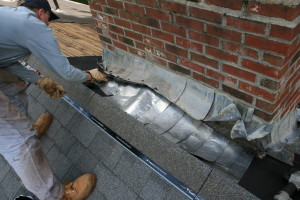Your chimney is designed to protect you from a range of potential safety hazards. If something is wrong with your chimney, you will need to get it repaired as soon as possible. There are a range of problems which you may experience if you do not make the necessary chimney repair.
How Your Chimney Works
Your chimney is designed to draw combustible gases out of your home. If it does not do this, then obviously, the gases will leak back inside your home. These gases can be hazardous to your health, especially carbon monoxide. Carbon monoxide levels can build up in your home without you being aware of it since you cannot see, smell, or taste it.
Your chimney also draws out hot air from your home. If excess heat stays around, then it is possible that a fire could be started in your home. Therefore, you will need to look into chimney repair to keep this from happening.
Chimney Mortar
The chimney’s mortar is prone to weathering and erosion. The chimney’s brick and mortar may weaken at any time. Experts should repair masonry damage in the chimney. Loose bricks are easy to fix and repair. You can do it by yourself. Clean your chimney. A chimney expert can remove the dirt that piled up over the years; excess heat and smoke can damage the mortar. Has your flue been repaired by a licensed chimney professional?
The flue- which is the most important part of the chimney where the smoke travels, can be dangerous, so it is best to leave its cleaning and repair to an expert. Replace your chimney cap with chicken wire if you have no available parts for replacement. The cap is the metal covering found at the top of the chimney to prevent birds, wind, and critters from going inside.

Repairing Chimney Mortar
In repairing your damaged mortar, you have to gather tools that you will need, such as protective eyewear, cold chisel, trowel, mortar, ball-peen hammer, caulk application gun, and caulking compound.
The chisel and hammer are used to remove the collapsed part of the mortar or any part of the cap or crown that is wearing away. Using your trowel, replace your new mortar by applying and sculpting it.
Position your new mortar on top of the bricks in an outward position to remove water from the flue. Repair other mortar damage. Remember to keep the mortar moist for a few days to allow it to cure.
Chimney Cap Damage
Chimney caps are susceptible to cracks because the mortar shrinks. Small cracks and joints in between cap and flue can be sealed using a caulking compound. In working with your repairs and replacements, make sure to use goggles and gloves.
Loose debris should be brushed off. One cause of air leak from the attic to your home is the space in your chimney. They should be properly sealed and insulated. Seal gaps using rockwool bats or other fireproof sealants. Seal the areas where the chimney and the frame meet to prevent gaps.
Water Damage
Water also can damage your chimneys worst than fire. Water penetration can damage both the internal and external parts of your chimney, including spalled or damaged brick, metal deterioration, and firebox assemblies, damper assemblies, ruined wall and rotten woods, broken heating system, cracked flue, and decayed mortar. Installing a chimney cap can prevent water damage. Chimney caps also function as a rain cover and are the most inexpensive protector that a homeowner can install to prevent water damage.
Chimneys have water openings where water may enter and may go to its interior. A sturdy cap will prevent water from coming in as well as prevent birds and other animals from getting into your chimney. A chimney cap also functions as a spark arrestor, preventing the spark from getting on your roof or other flammable materials nearby.
Chimney Crown
A damaged chimney crown can also prevent water penetration. It is the top part of the masonry chimney and also serves as a chimney wash. It covers the top of your chimney from the flue to the chimney edge. Water can penetrate the chimney crown if it starts to crack, wash away, or is damaged. Most crowns actually suffer from cracks immediately due to shrinkage. A chimney crown should be sealed with a cement mixture to prevent it from damaging soon. Waterproof cement is also available and can avoid shrinking effectively. Flashing, also, is where water can enter through into your house. Flashing is the edge that separates the chimney from your roof.
Flashing For Your Chimney
Flashing and counter-flashing is the effective way of flashing your chimney. These two methods avoid breaking the seal in both the roof and chimney. Most masonry chimneys are made of bricks that can absorb water like a sponge. Waterproof products have been developed for use to prevent chimney damage. These products are vapor permeable. They allow bricks to breathe out excess water to avoid further absorption, therefore, preventing the water from going inside from the outside.
Chimney Inspections Can Identify Erosion
Damage to your chimneys may be a slow process, but you will later realize the severe effects of it when the damage has gone further. It is better to do preventive maintenance to avoid major repairs and construction.


